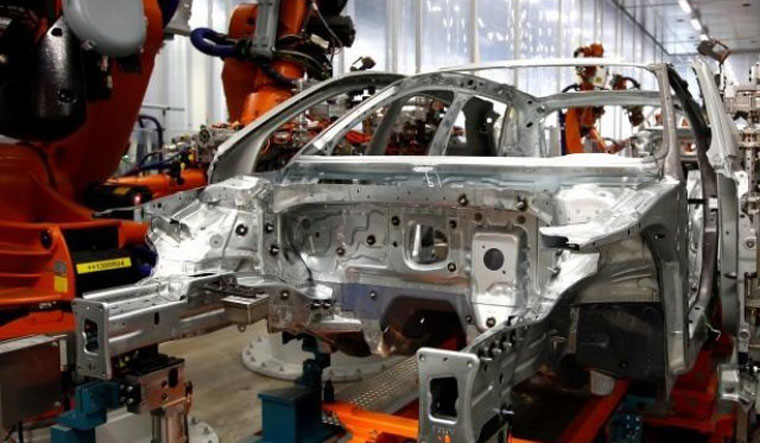Stricter and more environment-friendly vehicle emission norms will come into effect in India from April 1, 2020, and all automakers are focussed on launching new products or convert existing products to meet the new BS6 standards well ahead of time. Mahindra & Mahindra (M&M) executives said on Monday that the SUV maker will launch its first BS6 compliant model in the next three-four months.
“By the end of the second quarter (September) of this year, Mahindra will be ready with the petrol and diesel BS6. We will launch the BS6 petrol vehicle as it is ready, but the diesel BS6 vehicle only when BS6 fuel is available,” Pawan Goenka, MD of M&M said.
The first product that is set to get the new BS6 petrol engine will be the recently launched XUV300. The BS6 model will be able to run on BS-IV petrol, which is currently available in the market. However, availability of fuel will be crucial for BS6 diesel vehicles.
The Society of Indian Automobile Manufacturers will meet Union ministers and press for timely fuel availability, well ahead of the switchover deadline of April 1.
This is where inventory management will become crucial, and its going to be a tricky situation. Since the Supreme Court ruling states that BS-IV vehicles can’t be sold from April 1, 2020, companies will have to ensure that there is no BS-IV stock left post March 31. At the same time, they will have to have enough inventory of BS6 vehicles so that business doesn’t stand still on April 1. However, unless BS6 diesel is available earlier, any BS6 diesel vehicle that is produced before April will essentially sit idle.
“The last day of selling (BS-IV vehicles) is March 31. Now, we can’t switch overnight from selling BS-IV to BS6. Therefore, we will start selling BS6 vehicles sometime in January, latest by February. We can’t delay it beyond February, otherwise we won’t get the portfolio right. Unlike BS-IV, BS6 (diesel engine) is not something where a BS-IV fuel can be put in as it will immediately choke the system. Therefore, BS6 fuel has to be available from January 1,” said Goenka.
Vehicle prices are expected to go up post the introduction of BS6. While no automaker is ready to divulge details just yet, the expectation is that for vehicles above four metres in length, price could go up by around Rs 1 lakh or more, while for smaller vehicles it could be up to Rs 80,000.
There is, therefore, an expectation that there will be a lot of pre-buying of BS-IV vehicles in the second half of this year, before prices go up once the new emission norms kick in. However, companies will have to update suppliers by October-November on how much of the BS-IV vehicles would need to be produced. How demand pans out, though, remains uncertain given the current slowdown in demand across the industry.
Tata Motors says stock management will be done depending on the variant, with higher stock likely for the fast selling vehicles, and the slow-selling models, perhaps made to order.
“No BS6 vehicle can be sold before April 1, 2020, unless BS6 fuel is available. Therefore, any BS6 vehicle that you make before April 1, 2020 is actually blocking money. So, we will be very judicious in terms of how many vehicles we make. We certainly will have to make vehicles as our own throughput has to be proved and we need to keep some stock so that our business continues in the first week of April 2020,” Girish Wagh, the head of Tata Motors’ commercial vehicles business unit, told reporters recently.
With price expected to go up sharply for BS6 vehicles, some automakers are not keen to continue manufacturing the smaller capacity diesel vehicles as the buyers in those segments is cost-conscious.
Therefore, Mahindra will not be upgrading the 1.2 litre diesel engine that currently powers the KUV100 to BS6. Essentially from next April, the KUV100 will only be available in a petrol engine.
Market leader Maruti Suzuki has already announced plans to phase out diesel versions of some of its passenger cars, given that the cost of conversion from BS-IV to BS6 is significant, the price differential between a petrol and diesel car will also widen, and customers, particularly in the entry-level segment, may not be willing to bear the higher cost.
“For passenger vehicles, the 1.2l diesel would be hard to justify because that goes into a vehicle that costs Rs 6 lakh or there about. Therefore, the cost impact of 1.2l diesel will be very difficult to justify. Therefore, many of the OEMs (original equipment manufacturers) are deciding not to do the 1.2l diesel. When I say 1.2, it may be 1.1 or even 1 litre diesel,” said Goenka.
The country’s second largest car maker Hyundai has said it will continue with diesel engines even in the BS6 era. Tata Motors too plans to continue offering all powertrains.
“As a full mobility solutions provider in India, we will provide all powertrains, diesel, petrol, CNG,” said Mayank Pareek, president of Tata Motors’ passenger vehicle business unit.
Tata Motors spent around Rs 1,100 crore on BS6-related developments last financial year. M&M too has invested around Rs 1,000 crore on BS6.
The maker of the XUV500 and Marazzo SUV will have eight diesel engines as well as 8 petrol engines in its BS6 portfolio, company executives said.



